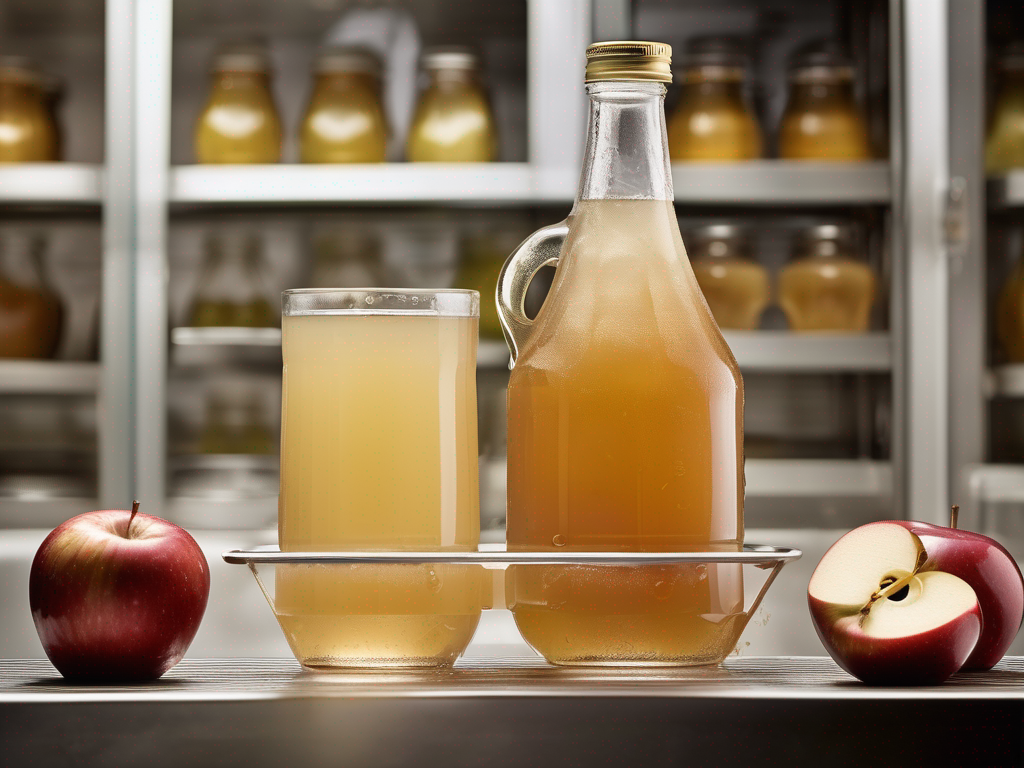
Is it Safe to Consume Leftover Apple Juice Refrigerated and Opened?
Get Your Free Food Safety Cheat Sheet
30 most common foods with instant answers. Print it and stick it on your fridge—completely free!
Is it Safe to Consume Leftover Apple Juice Refrigerated and Opened?
In today's blog post, we will discuss the safety of consuming leftover apple juice that has been refrigerated and opened. It's essential to understand how to determine if the apple juice is still safe to drink after it has been exposed to air and stored in the refrigerator. Let's delve into the details to help you make an informed decision about consuming leftover apple juice. (Apple juice refrigerated opened)
Understanding the Shelf Life of Apple Juice
Apple juice, like most fruit juices, has a limited shelf life once it has been opened. When apple juice is exposed to air, it can start to degrade due to oxidation and microbial growth. The shelf life of opened apple juice can vary depending on several factors, including:
- Storage temperature
- Exposure to light
- Contamination
- Quality of the juice
Factors to Consider When Assessing the Safety of Leftover Apple Juice
When determining if leftover apple juice is safe to consume, consider the following factors:
1. Smell and Appearance
- Smell: Sniff the apple juice to check for any off odors, such as a sour or musty smell.
- Appearance: Inspect the color and clarity of the juice. Any signs of mold, cloudiness, or unusual discoloration indicate spoilage.
2. Taste
- Take a small sip of the apple juice to assess the taste. Spoiled apple juice may have a fermented or off-flavor.
3. Texture
- Check the texture of the apple juice by observing any unusual particles or sliminess, which can indicate spoilage.
4. Expiration Date
- Refer to the expiration date on the apple juice packaging. While the date is a guideline, it can provide an indication of the freshness of the juice.
5. Storage Conditions
- Consider how the apple juice has been stored. Proper refrigeration at a consistent temperature (around 40°F or 4°C) can help extend the shelf life of the juice.
Safety Tips for Storing and Consuming Apple Juice
To ensure the safety of leftover apple juice, follow these practical tips:
- Refrigerate Promptly: Always refrigerate apple juice promptly after opening to slow down bacterial growth.
- Use Clean Containers: Store leftover apple juice in clean, airtight containers to prevent contamination.
- Label and Date: Label the container with the date when the apple juice was opened to track its freshness.
- Avoid Cross-Contamination: Use clean utensils and avoid mixing leftover apple juice with other liquids to prevent contamination.
- Consume Within a Few Days: Aim to consume leftover apple juice within 3-5 days for optimal freshness and safety.
Conclusion
In conclusion, it is crucial to assess the quality and safety of leftover apple juice before consuming it. By considering factors such as smell, appearance, taste, texture, expiration date, and storage conditions, you can make an informed decision about whether the apple juice is safe to drink. Following proper storage practices and using your senses to evaluate the juice can help reduce the risk of consuming spoiled apple juice. Stay mindful of these tips to enjoy your apple juice safely and deliciously.
Remember, when in doubt, it's best to err on the side of caution and discard the leftover apple juice if you suspect it may be spoiled. Your health and well-being are paramount when it comes to food safety. Cheers to enjoying fresh and safe apple juice! (Apple juice refrigerated opened)
Authoritative Food Safety References
These agencies and university labs inform every tip and health precaution we publish.
USDA FoodKeeper – Cold Storage Guidelines
Official refrigerator, freezer, and pantry timelines maintained by the U.S. Department of Agriculture.
Visit USDA FoodKeeperFDA Produce Safety Rule & Grower Guidance
Field-to-fridge handling practices that prevent contamination of fruits, vegetables, and leafy greens.
Visit FDA Produce SafetyCDC Foodborne Illness Prevention Hub
Surveillance-backed guidance on pathogens, symptoms, and steps to reduce foodborne illness risk.
Visit CDC Food SafetyUC Davis Postharvest Technology Center
University research detailing optimal storage atmospheres for produce after harvest.
Visit UC Davis PostharvestPenn State Extension – Home Food Preservation & Safety
Peer-reviewed extension bulletins on safe canning, chilling, and reheating practices.
Visit Penn State ExtensionGet Your Free Food Safety Cheat Sheet
30 most common foods with instant answers. Print it and stick it on your fridge—completely free! Want more? Upgrade to the complete guide with 70+ foods.
Scan your food directly and get instant safety info using our AI-powered camera feature.